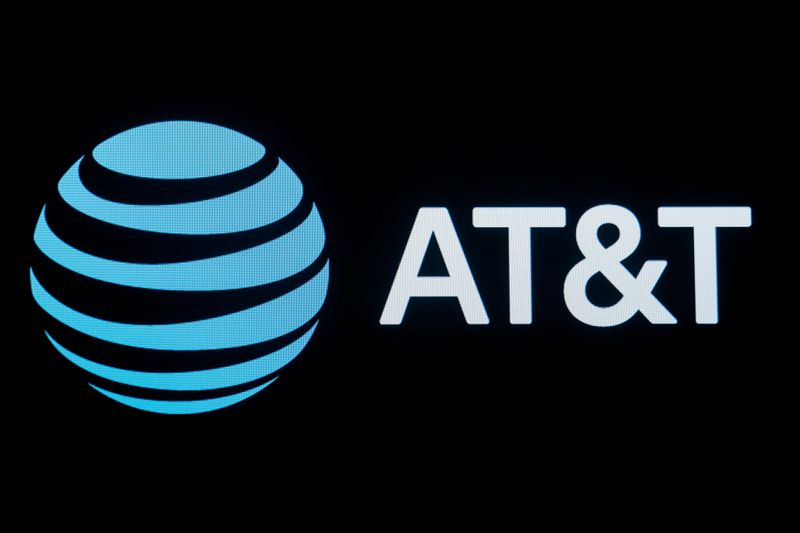(Reuters) – AT&T Inc on Thursday reported the coronavirus pandemic had taken a heavy toll on its media business, but quarterly results were offset by more new phone subscribers than expected, which executives credited to the improved quality of its wireless network.
That helped AT&T beat revenue expectations. Total revenue was $42.3 billion during the third quarter ended Sept. 30, exceeding the average analyst expectation of $41.59 billion, according to IBES data from Refinitiv.
Shares of AT&T surged 5% to $28.11 in morning trading.
The company added 645,000 net new phone subscribers during the quarter who pay a recurring monthly bill. Analysts had expected AT&T to lose a net 9,000 customers, according to research firm FactSet.
During an earnings call with analysts, AT&T said it expected its wireless business to continue to do well in the fourth quarter, when customers typically upgrade to new phones or move to unlimited plans.
AT&T, which has spent the past few years investing in media businesses, forecast continued “choppiness” for movie theaters in the United States as the pandemic continues.
“We’re not optimistic,” said AT&T Chief Executive John Stankey during a call with financial analysts. “We’re not… expecting a huge recovery in theatrical moving into the early part of next year.”
WarnerMedia, the segment that contains HBO and the company’s movie and TV studio, generated revenue of $7.5 billion, down from $8.4 billion in the year-ago quarter, as movie theaters largely remained shut in the U.S.
The company reported 38 million subscribers in the United States for both its premium TV channel HBO and HBO Max during the third quarter, reaching its 2021 goal a year early, as more people sought entertainment at home. It currently has 57 million subscribers worldwide.
AT&T said that 28.7 million customers had access to HBO Max during the quarter, and reported 8.6 million HBO Max “activations,” which it sees as a sign of engagement. Such activations are defined as customers who had access to the streaming service through their unlimited phone plans, for instance, and then activated their accounts to use the service.
The services had 36.3 million subscribers in the United States in the previous quarter.
Even as the WarnerMedia segment attracts new subscribers, it must also contend with existing HBO subscribers through their pay TV providers who are cutting the cord.
AT&T is playing catchup to larger streaming video rivals. Netflix currently serves about 68 million U.S. customers and nearly 200 million worldwide. Walt Disney Co’s Disney+ has more than 60 million subscribers, reaching its goal four years early.
Adjusted earnings per share were 76 cents, matching analyst expectations. The figure was down from 94 cents in the same quarter last year.
AT&T said the pandemic eroded earnings per share by 21 cents.
The company added 357,000 net new fiber internet customers during the quarter, as demand for home internet increased with more Americans working from home during the pandemic.
(Reporting by Sheila Dang; Editing by Bernadette Baum)
























